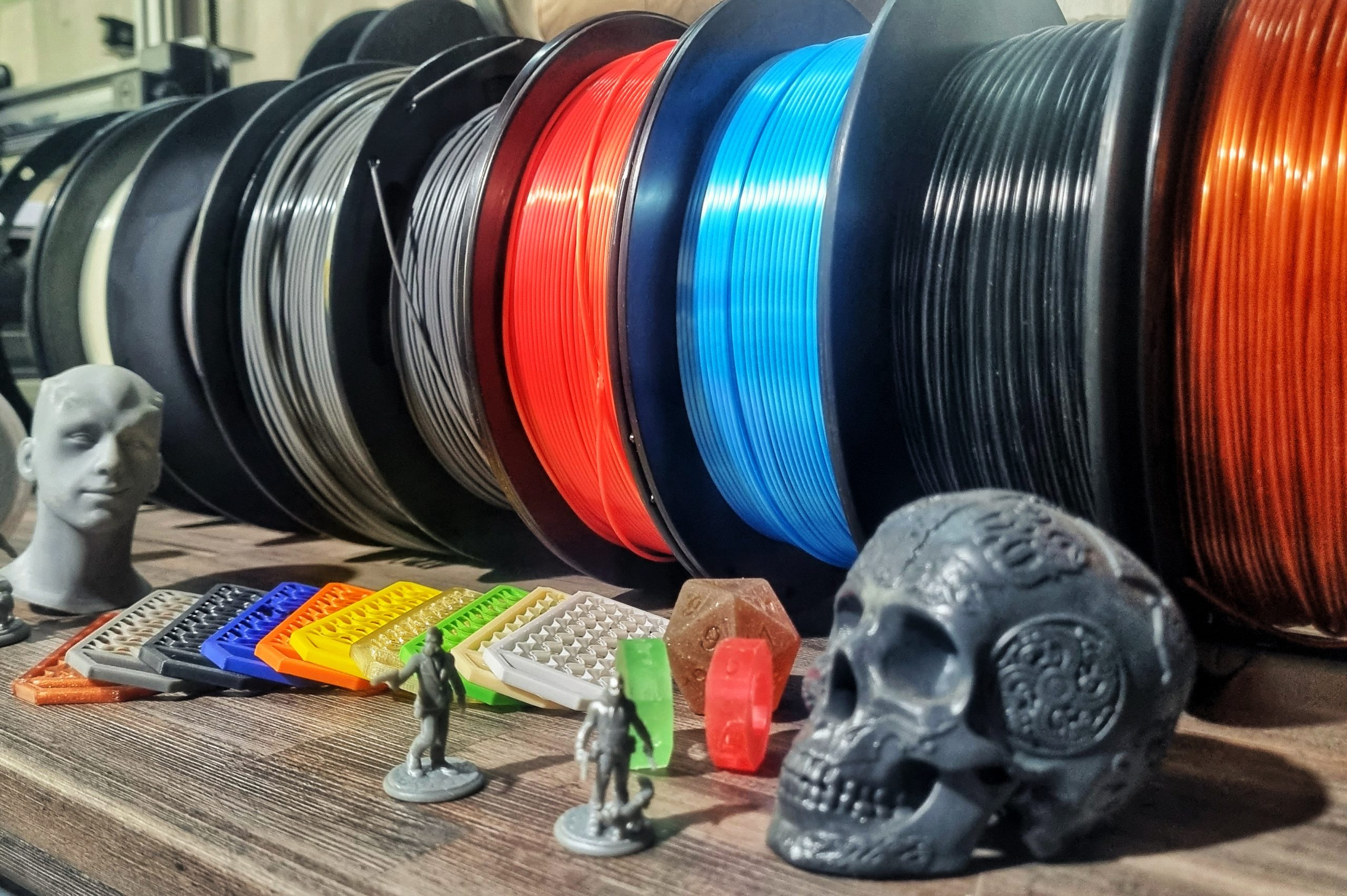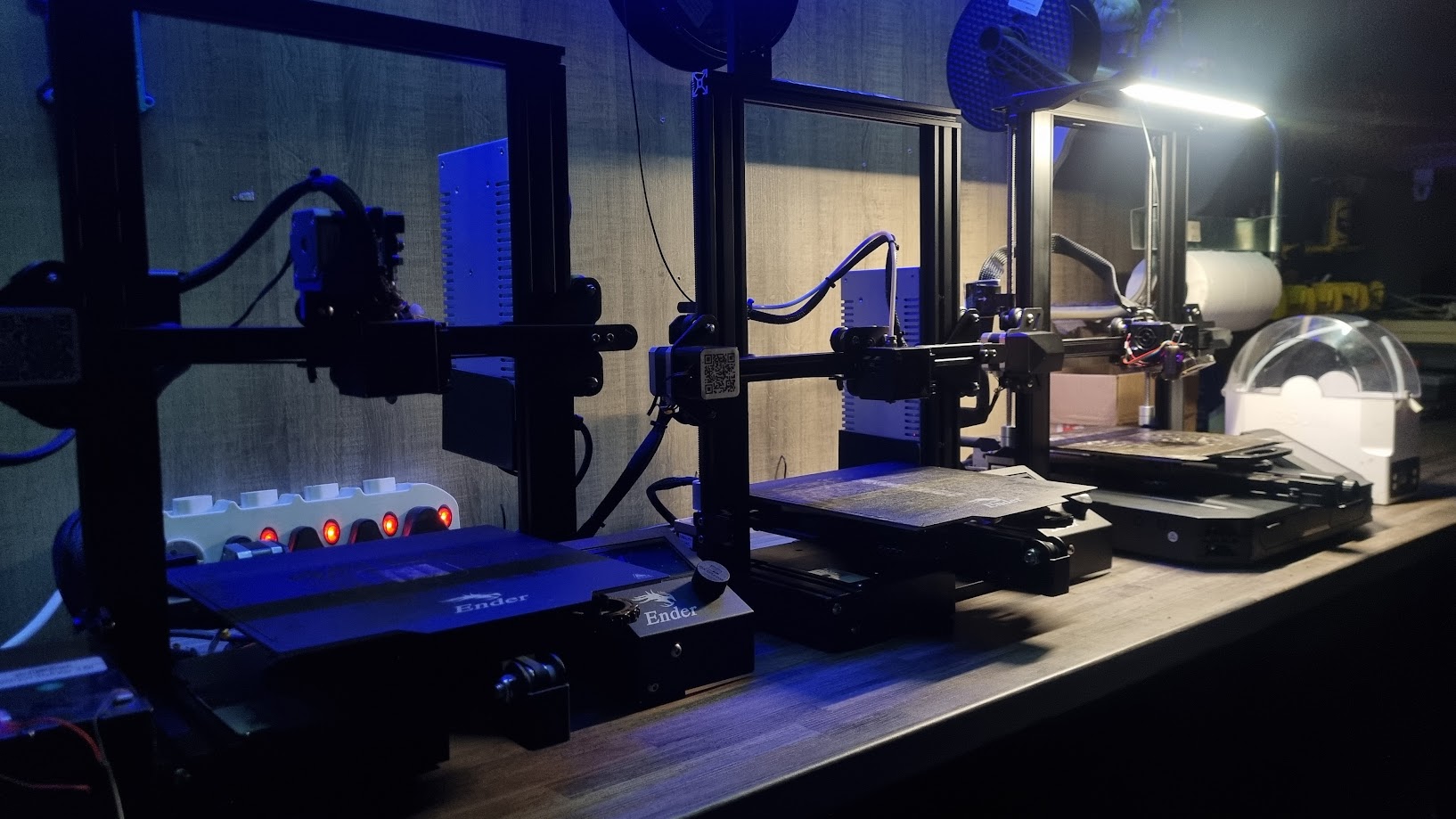
Filaments And Materials
Let`s talk Materials, PLA, PeTG, ABS, TPU, Carbon Fiber, Nylon, the list goes on.
Different materials have their strengths and weaknesses in the manufacturing and practical world, untimely the final item and its purpose or application can requires specific types of filaments as it can significantly influences the quality, strength, and functionality of 3D-printed objects and will often be the deciding factor in what material would best suite your needs.
To help you decide what martial might be needed for your projects or parts, have a look at the below, these filaments have their own strengths and as such affects the final cost of your parts. reach out to us if you need more information or assessment of what materials we would recommend for your projects. visit our: Contact Us page
PLA (Polylactic Acid):
PLA is one of the most popular 3D printing filaments due to its ease of use, biodegradability, and low toxicity. Derived from renewable resources like cornstarch or sugarcane, PLA offers an eco-friendly solution for various applications, including prototyping, educational models, and decorative items. It is not as durable as other filaments, making it unsuitable for functional components exposed to high stress.
ABS (Acrylonitrile Butadiene Styrene):
ABS is known for its exceptional toughness, heat resistance, and impact strength, making it suitable for creating durable and functional prototypes, automotive parts, and enclosures for electronics. However, ABS emits potentially harmful fumes during printing, necessitating proper ventilation and safety measures.
PETG (Polyethylene Terephthalate Glycol-Modified):
PETG combines the best attributes of both PLA and ABS. It offers good strength, durability, and temperature resistance while being less prone to warping during printing. As a result, it finds applications in mechanical parts, food containers, and medical devices.
Nylon:
Nylon filaments are lauded for their exceptional strength, flexibility, and wear resistance. These qualities make them ideal for producing functional parts like gears, hinges, and mechanical components. However, due to their high moisture absorption, they require careful handling and storage.
TPU (Thermoplastic Polyurethane):
TPU is a flexible and rubber-like filament, famous for its excellent elasticity and shock absorption. It is commonly used in the creation of phone cases, footwear, and soft robotics.
PVA (Polyvinyl Alcohol):
PVA is a water-soluble filament primarily utilized as a support material for complex 3D prints. It enables the creation of intricate designs and overhangs in combination with other materials like PLA.
Conductive Filaments:
These filaments are infused with conductive particles like carbon or graphene, allowing for the fabrication of functional electronic components, such as touch sensors, LED circuits, and wearable devices.
Wood, Metal, and Carbon Fiber Composites:
Filaments blended with wood, metal, or carbon fiber particles provide a unique aesthetic appeal and improved material properties. Wood-infused filaments give a natural appearance, while metal and carbon fiber composites offer increased strength and stiffness, perfect for specialized aerospace, automotive, or artistic applications.

